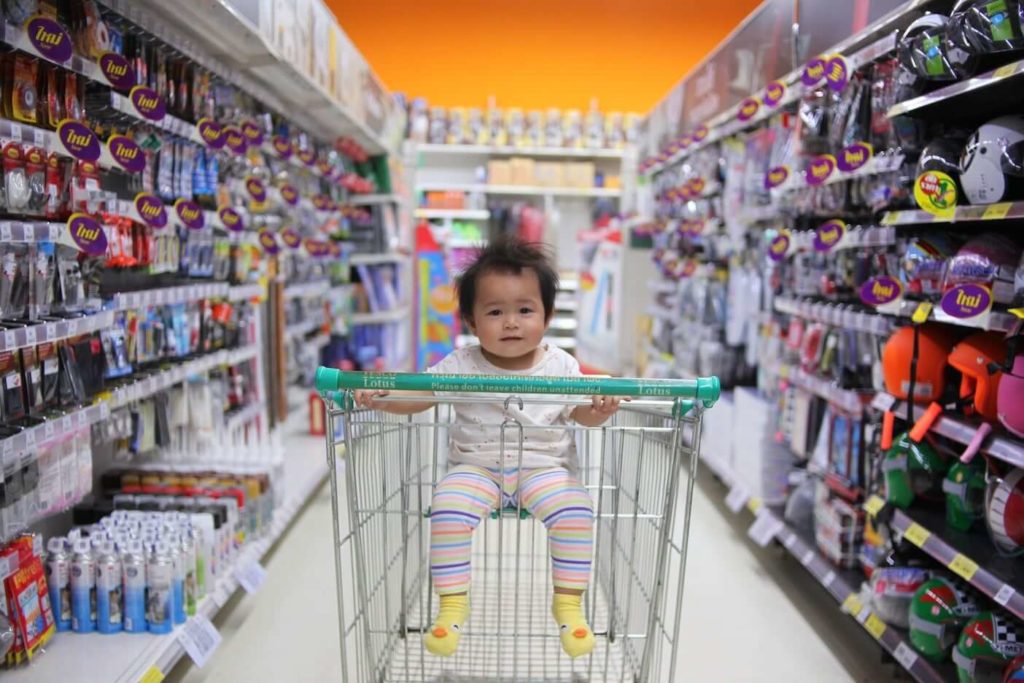In 1950, Sainsbury in Croydon introduced a curious innovation: the shopping trolley. Until then, the idea of giving shoppers such a vehicle and allowing them to walk up and down the aisles, helping themselves to everything in the store, was completely alien. (In fact, the shopping cart, as Americans call it, was invented back in 1937. But it made little sense in the age of wartime and post-war rationing.)
Sainsbury even employed people to pretend that they were using the trolleys to make it seem “normal” to skeptical shoppers.
Needless to say, it is now impossible to imagine supermarkets or even larger convenience stores without trolleys. They have done more than anything to increase revenues and reduce staff costs in retail. Probably the greatest advance in self-service ever, bar none.
Will robots replace humans in retail?
The same cannot be said for self-checkout. In fact, at RetailExpo 2019, in the great debate “Will robots replace humans in retail?” people were already talking about its demise. The technology has been well established in the United Kingdom for more than a decade. But:
- Customer surveys show that shoppers often hate it and see it as no more than an attempt on the part of supermarkets to cut costs. Most of all people hate the robotic authoritarianism of the self-checkout terminal, so much so that the phrase “Unexpected item in bagging area” has become known as “the Tesco meme”.
- Attempts to “humanize” them, for example when Poundland used the voice of an Elvis impersonator, have attracted ridicule.
- From a customer’s perspective, it is not even efficient. Investigations by prominent journalists like Jenni Murray have demonstrated that self-service terminals are slower than cashier-operated checkouts.
- A 2014 survey showed that one in five people admitted to shoplifting at self-service checkouts, adding up to around €2 billion of items every year.
- Unlike more traditional forms of shoplifting, in many cases it is very difficult for retailers to prove intention to steal – shoplifters can simply claim they intended to scan the item. It is also easy for shoplifters to relabel expensive items with barcodes for cheaper items.
- Counter measures that involve intrusive surveillance of shoppers (via technology or staff whose only job is to supervise self-scanning) is also unpopular, and expensive.
It seems that whereas we embrace self-service and take it for granted in many areas of life, the self-serve checkout is a step too far.
Nobody seems to resent having to fill up the tank themselves at a filling station (though in some countries like Italy it is normal to at least have the option of being served by a friendly human being). Likewise, most of us are happy to check ourselves in online or at a terminal in the airport.
Yet, the feeling persists that checking out in a store means “doing their work for them”. It is a long time since anyone said that about shopping trolleys.
There is a balance to be had here. Self-scan takes away the last vestige of human interaction – a brief chat with a cashier. The problem with self-scan checkouts is not technology or technophobia.
Rather, it is a misuse of technology. Vox put an interesting spin on it recently.
“When Walmart installs a new self-checkout, it’s not “automating” the process of checkout; it’s simply turning the register around, giving it a friendlier interface, and having the shopper do the work themselves.”
Germans just don’t get it
It is a good idea to look at Germany If you want to find out if an innovation in retail is going to prove “sticky”, i.e. if it has much of a future.
Renowned as a nation that is at the forefront of technology (remember the slogan, “Vorsprung durch Technik”, as they say in German?), when it comes to retail, the Germans seem positively backward. The first self-scan terminals only arrived – to much fanfare in the German press – early in 2018. Twenty years since they first appeared in the USA.
And market penetration so far is feeble, to say the least. Visit the German DIY chain Bauhaus and I kid you not, you will find long queues at the checkouts while the self-scan terminal is about as popular as an abusive gatecrasher at a party.
So why the resistance? According to Professor Martin Fassnacht of the prestigious WHU business school in Düsseldorf: “Germans simply don’t see the point”. To succeed, German retailers would need to demonstrate that the technology means shoppers are getting a better deal. Geiz ist geil (“stingy is sexy”) sums up the German shopper’s mentality better than Vorsprung durch Technik. Provide a 5% discount, and Germans will queue all day to self-serve.
(There is however another side to the story. In Germany, shopworkers’ trade unions are much stronger than they are in the UK and highly protective of their members’ jobs. They have representation on works councils and will veto innovations that they see as a threat.)
It comes down to customer experience
At Bizimply we are not taking an extreme position, pro or contra. We think it’s likely that in their current form, self-serve checkouts do not have a great future. But they will evolve and get better.
Self-scan will be replaced by more advanced technologies in many leading retail outlets (such as Amazon Go’s cashierless stores, which use cameras, elaborate sensors and machine learning to allow customers to pick up what they want and walk out).
But what is clear to us is that there is an opportunity here for retailers to improve the customer experience by training and rostering staff optimally to ensure that those who want to use self-scan – in the way that was intended – can do so, while those who cannot or will not use it do not feel that they are being punished.
And in the end, what matters in retail is that customers feel that visiting your shop is not just value for money but a rewarding experience.
The way to improve that experience lies in understanding what technology does well, and what humans do well. It also requires some understanding of local cultures.
Robots have a major role to play in the future of retail, but they cannot replace humans entirely.













